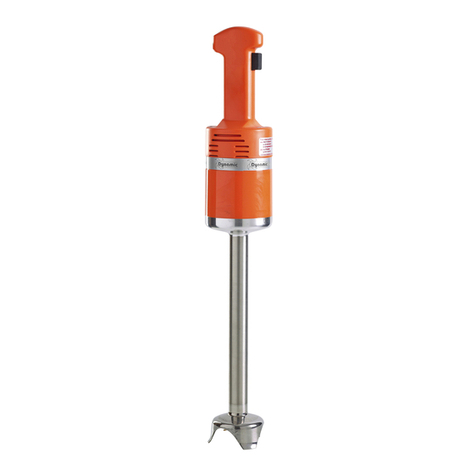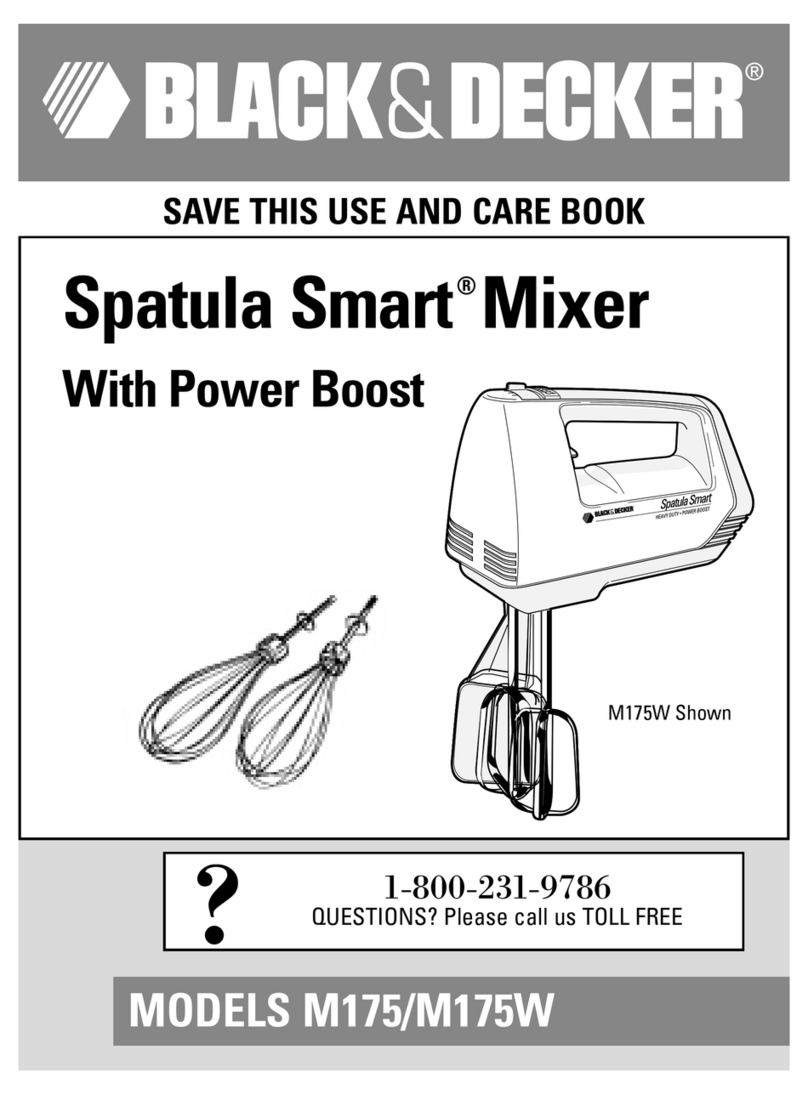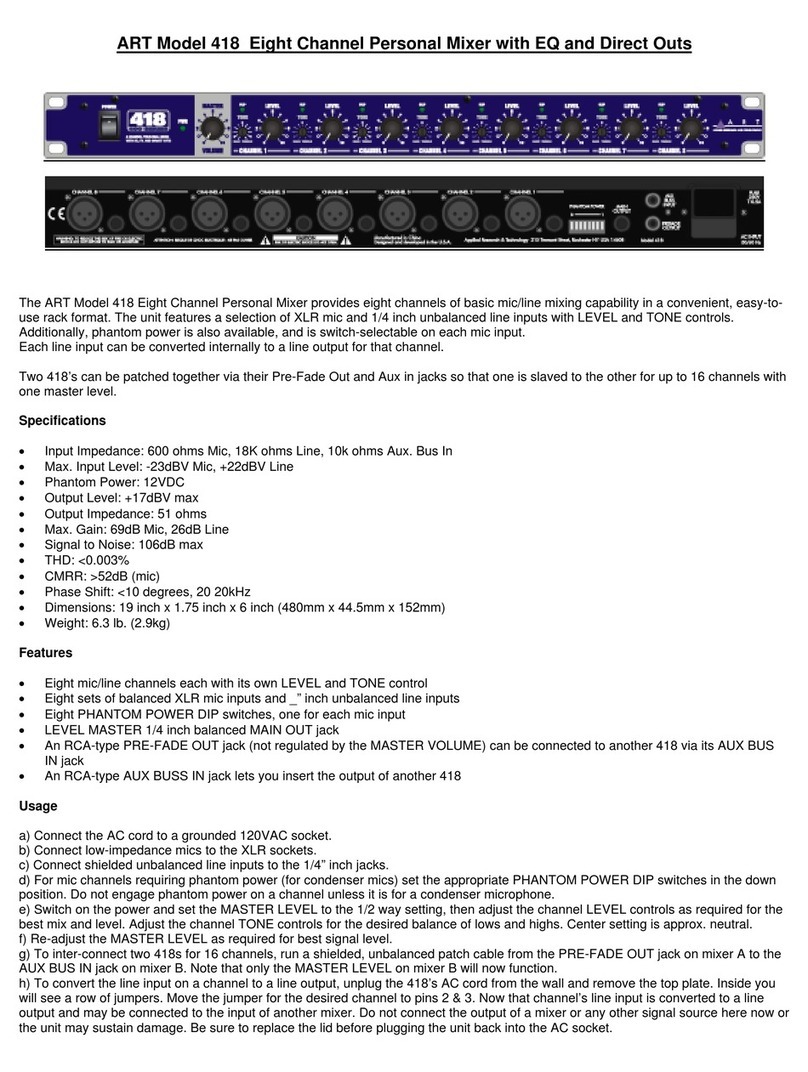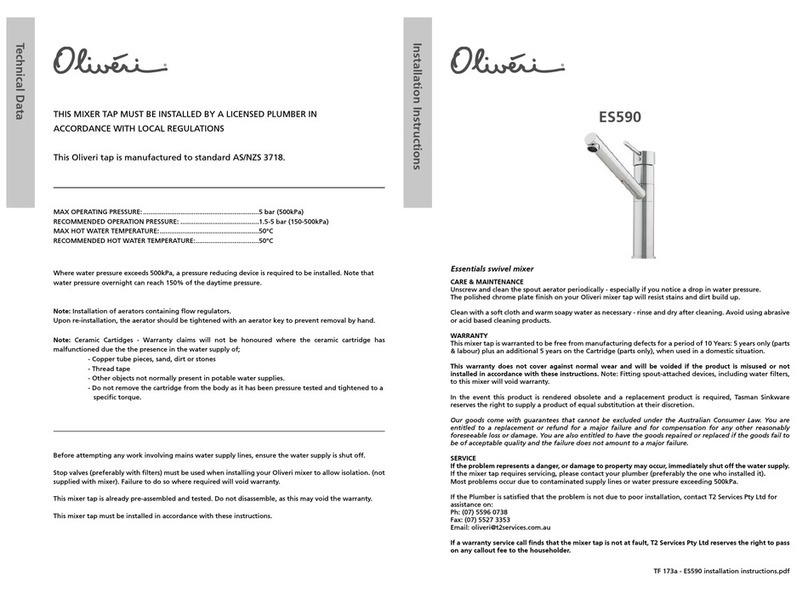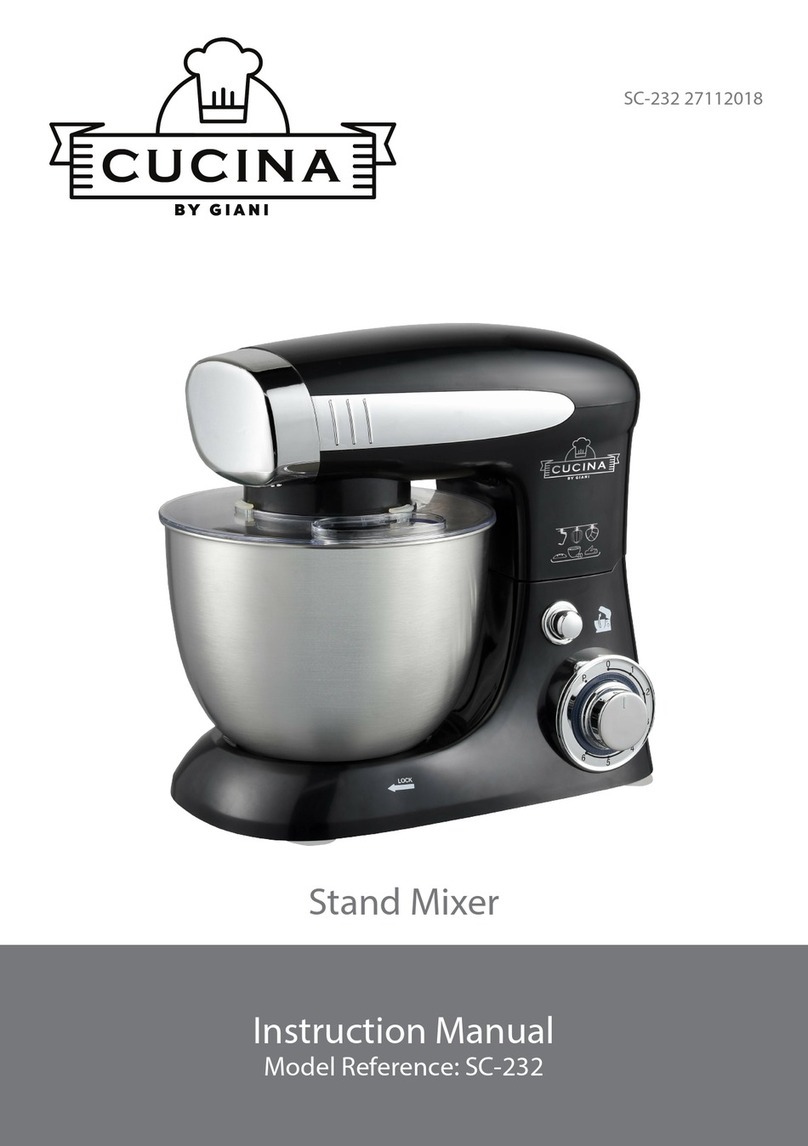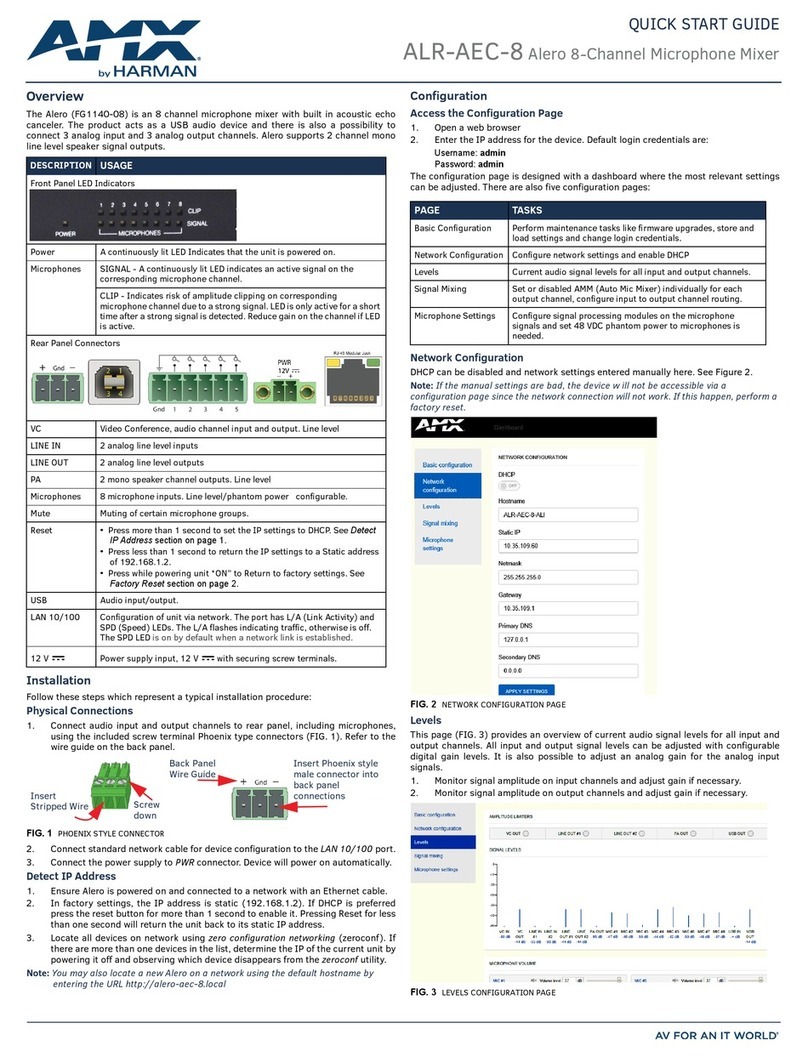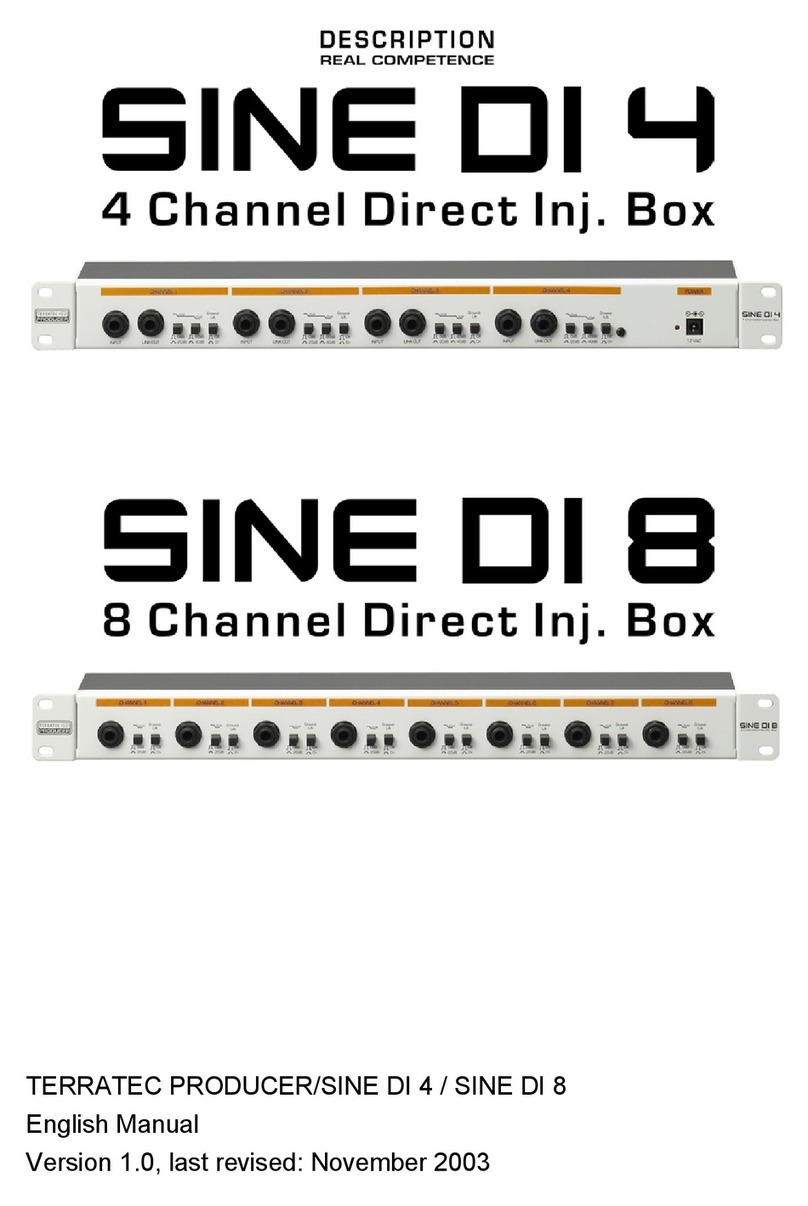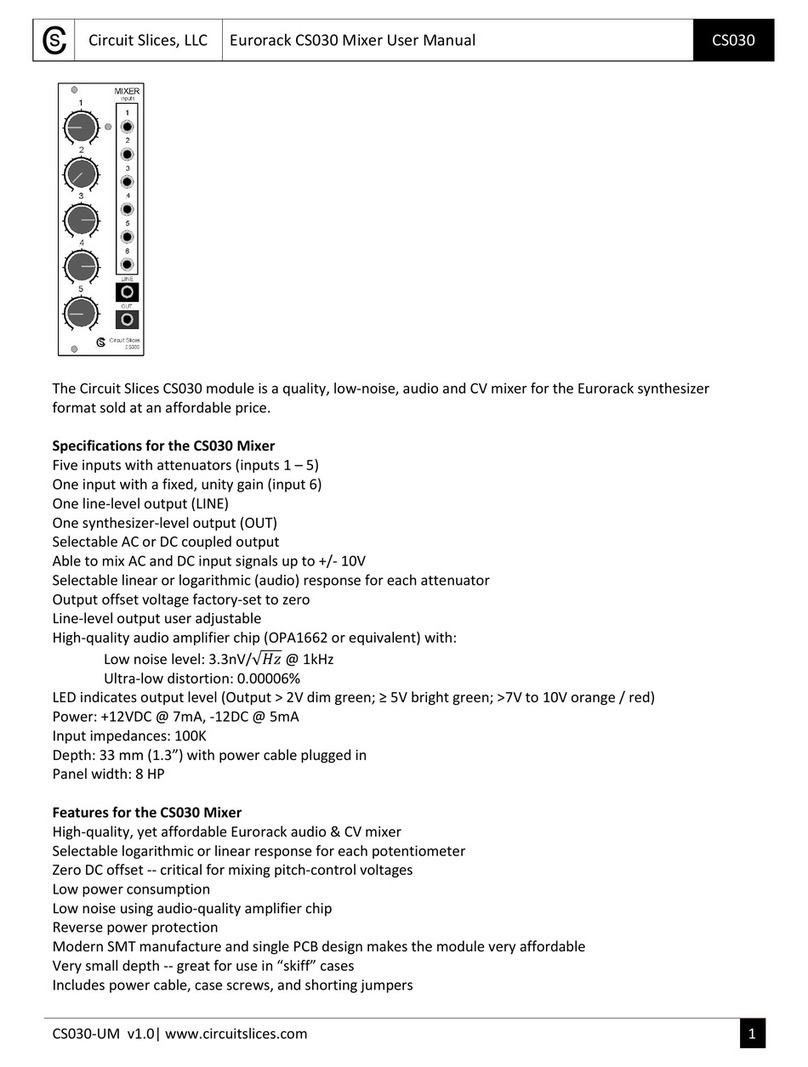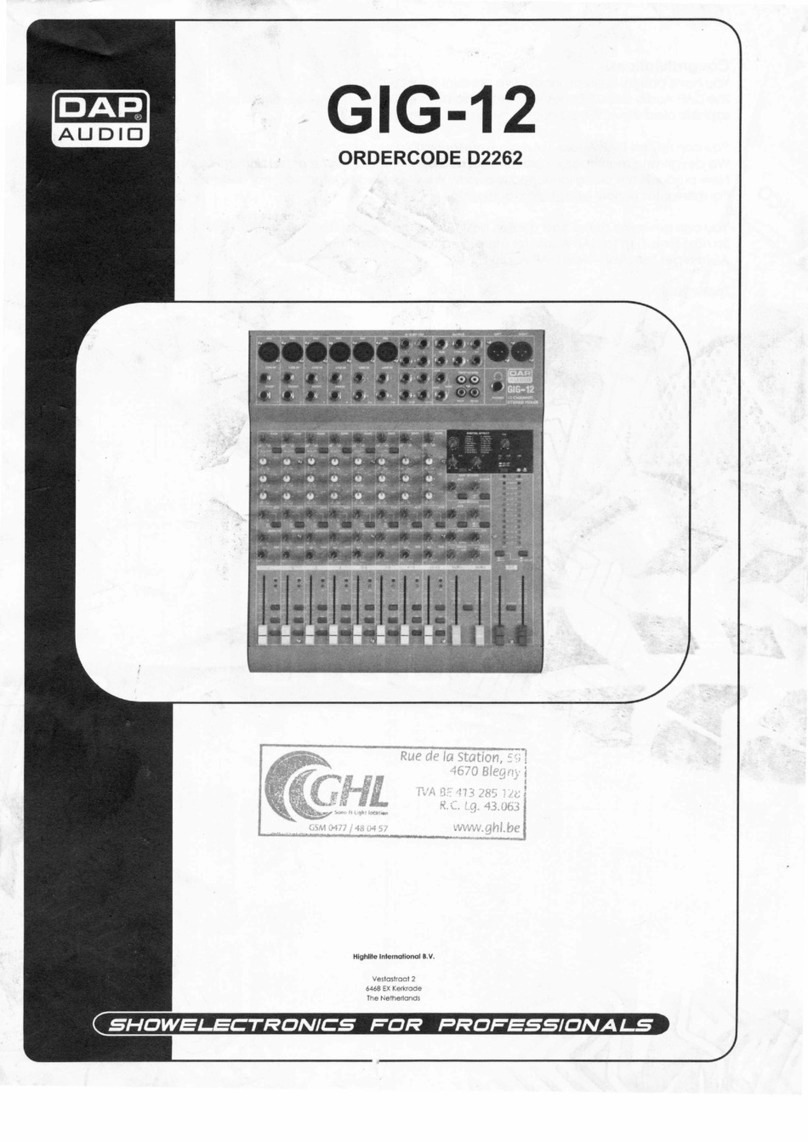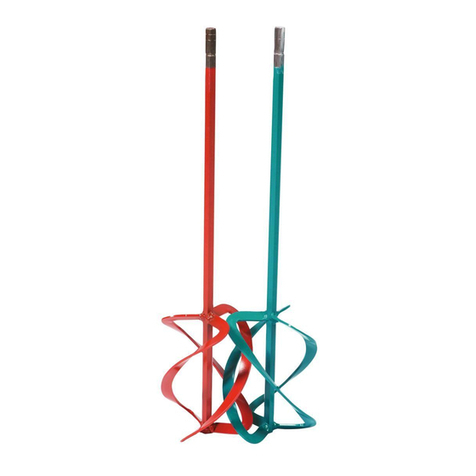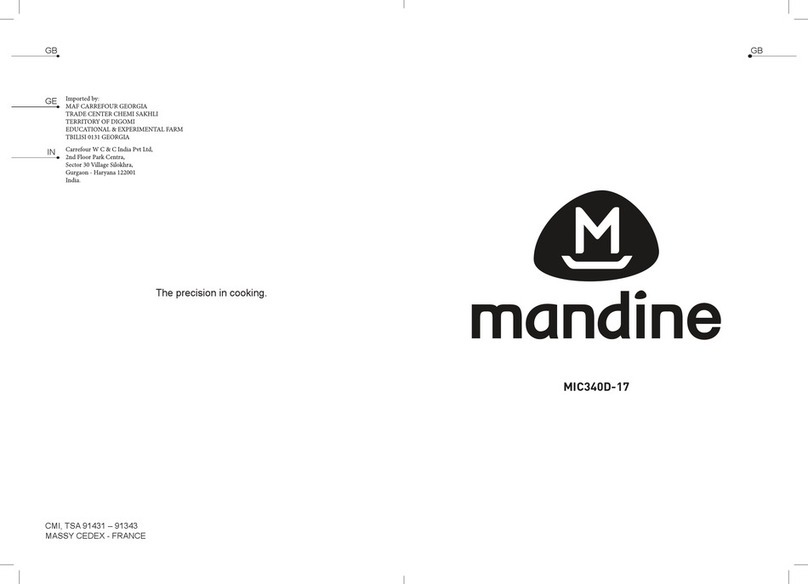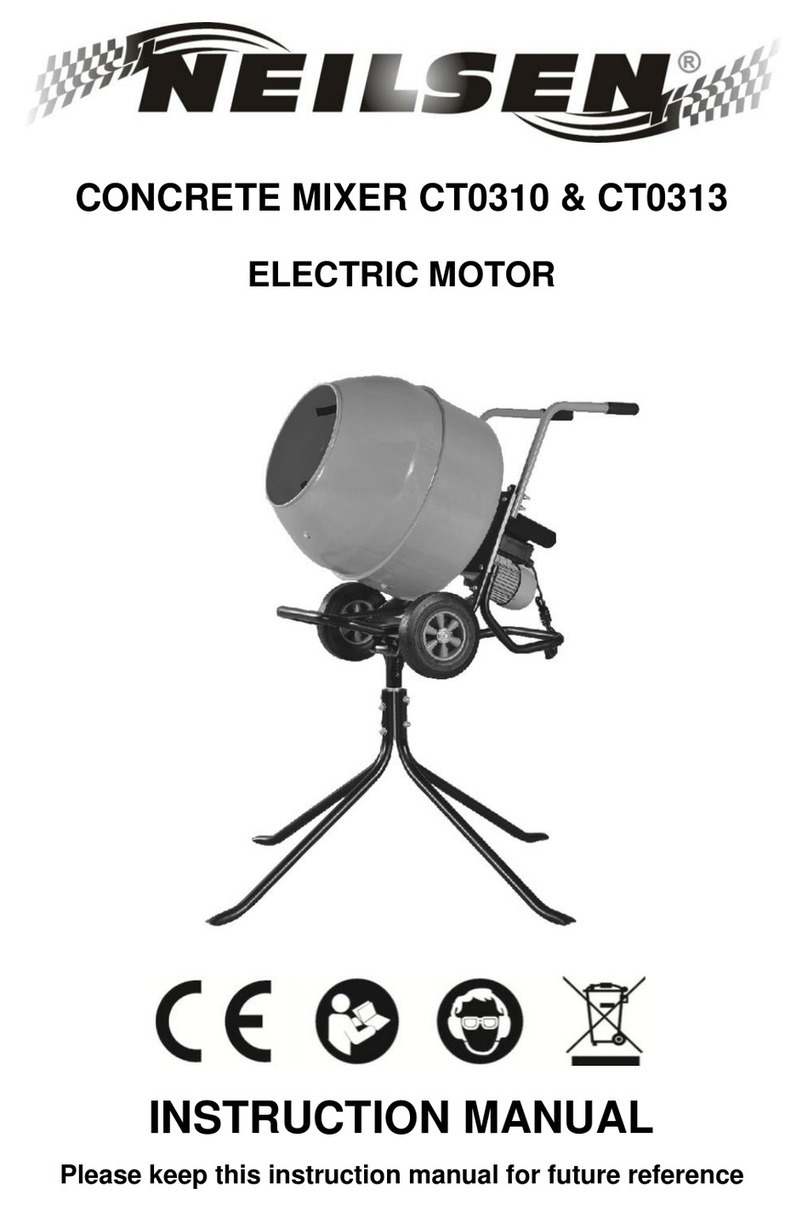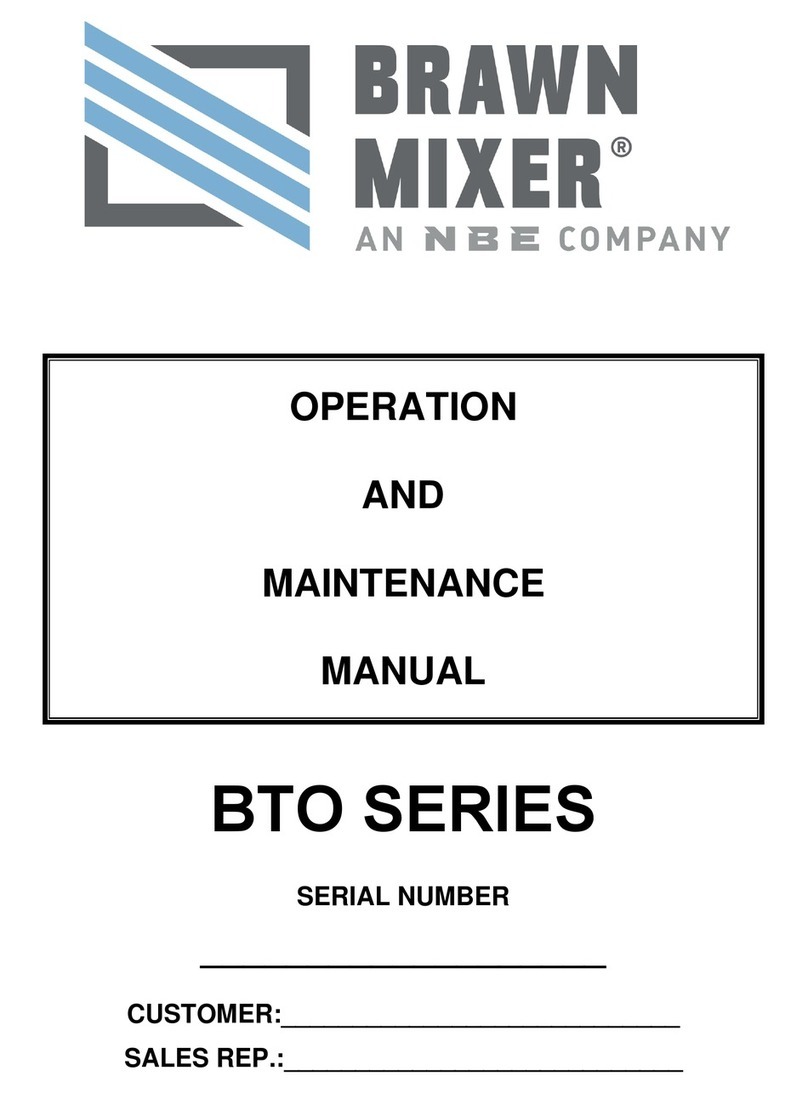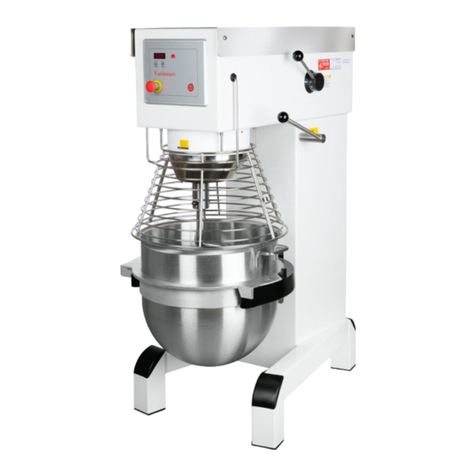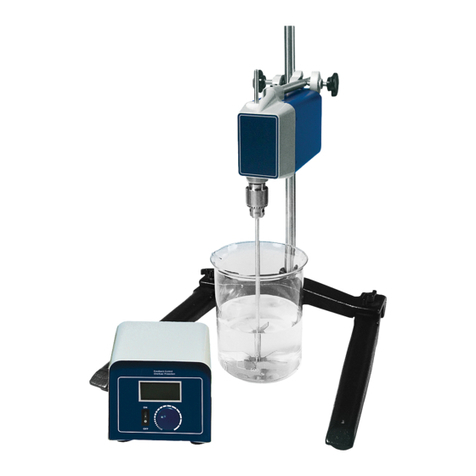Sirman Ciclone W 200 Specification sheet

28
CHAP. 8 - DISPOSAL OF THE MACHINE
8.1 - DISINSTALLATION
If it has been decided to disinstall the machine for some reason, ensure that the
machine is unusable by anyone: detach and cut electrical connections.
8.2 - WEEE Waste of Electric and Electronic Equipment
Directive 2002/95/EC, 2002/96/EC and 2003/108/EC on the restriction of the
use of certain hazardous substances in electrical and electronic
equipment, and waste electrical and electronic equipment
This symbol, crossed out wheelie bin, on the product or on its packaging indicates that
this product must not be disposed of with your other household waste.
Separate waste collection of this appliance is organised and managed by the
manufacturer. It is the user’s responsibility to contact the manufacturer and follow the
waste treatment system the manufacturer has adopted for separate waste collection.
The separate collection and recycling of your waste equipment at the time of disposal
will help to conserve natural resources and ensure that it is recycled in a manner that
protects human health and the environment.
SERVICE CENTRE
AUTHORISED DEALER
1
Professional Hand-Held Mixer
W 200-280-360
Regular,
Speed variator,
Instructions for use and maintenance
Ed. 07/2014

2
INTRODUCTION
This manual has been written to supply the Customer with all the information
on the machine and the related safety rules, as well as the instructions for the
receipt of the machine itself, cleaning, maintenance and disposal that allow to
use and maintain the means keeping its efficiency intact throughout the time.
This manual it to be kept till the disposal of the machine.
This manual is to be kept at disposal of members of staff that have been
appointed to operate the machine and to carry out maintenance tasks.
TABLE OF CONTENTS
CHAP. 1 - RECEIPT OF THE MACHINE page 4
1.1 - PACKAGING
1.2 - BOX CHECK UPON RECEIPT
CHAP. 2 - INSTALLATION page 6
2.1 - UNWRAPPING
2.2 - PLACEMENT
2.3 - ELECTRICAL CONNECTION
2.4 - ELECTRICAL DIAGRAM
CHAP. 3 - MACHINE’S INFORMATION page 10
3.1 - GENERAL PRECAUTIONS
CHAP. 4 - GETTING ACQUAINTED WITH THE MACHINE page 13
4.1 - IN-BUILT FEATURES
4.2 - IN-BUILT SAFETY DEVICES
4.2.1 - Mechanical safety devices
4.2.2 - Electrical safety devices
4.3 - MACHINE’S DESCRIPTION
4.4 - OVERALL DIMENSIONS, WEIGHT, FEATURES
CHAP. 5 - USE OF THE MACHINE page 19
MOUNTING THE ACCESSORIES
5.1 - PREPARATORY CHECK
5.2 - USE’S FIELDS
5.3 - MACHINE’S USE
CHAP. 6 - REGULAR CLEANING page 23
6.1 - GENERAL INFORMATION
6.2 - EXTRA CLEANING
6.2.1 - GENERAL INFORMATION
27
CHAP. 7 - MAINTENANCE
7.1 - GENERAL INFORMATION
Before carrying out any maintenance task, it is recommended to:
unplug the feeding cable from the net to insulate the machine from the rest of the
plant completely.
7.2 - DIPPING OF ACCIDENTAL FALL OF THE MACHINE
In case of immersion or accidental fall of any accessory or the machine itself, do
not use it and contact CUSTOMER SERVICE.
7.3 - SHAFT AND WHIP FIXING
Check that the shaft and the whip are firmly and solidly fixed to the engine’s
body. If this is not the case, please contact CUSTOMER SERVICE.
7.4 - FEEDING CABLE
Periodically, check the state of wear of the feeding cable and in case, contact
CUSTOMER SERVICE.
7.5 - COMMANDS LINING
Periodically, check the state of wear of the rubber commands lining and in case
of wear contact CUSTOMER SERVICE.
7.6 - BLADE
Check the sharpness of the shaft’s blades to replace them, please contact
CUSTOMER SERVICE.
7.7 - WHIPS
Check that the whips keep their original conformation and that they do not
detach easily from the whip’s body. If this is not the case, please contact
CUSTOMER SERVICE.
7.8 - GASKETS - SEALING RINGS
Periodically check the sealing gaskets, once the knife-holding base is
disassembled (Fig. 64).
If these show wear, contact CUSTOMER SERVICE.

26
sharp parts. Hence, it is recommended to use protective gloves and to be ex-
tremely careful all the time.
Disassembly of the shaft (Fig. 64)
1. Detach the shaft from the engine’s body and position it on a surface with the
knives on the right side.
2. Predispose the tools (a-b), grip the tool (b) with the left hand and insert it in
the dragging device inside the shaft
3. ATTENTION: Using a key (a), unscrew clockwise till the blade group is re-
moved.
4. Remove the inner shaft from the main shaft pushing it towards the tool (b).
5. Proceed to clean the single pieces with a dump cloth and some dish deter-
gent, keeping in mind that the bearings must not come into contact with liq-
uids.
6. In case of encrustation, insist with the cloth. Do not use abrasives, pointy or
sharp tools.
7. Disassemble everything the opposite way. ATTENTION: fix firmly the knife or
this could detach itself during the operating stage.
Fig. n°64
1
3
(b)
(a)
2
3
CHAP. 7 - MAINTENANCE page 27
7.1 - GENERAL INFORMATION
7.2 - DIPPING OF ACCIDENTAL FALL OF THE MACHINE
7.3 - SHAFT AND WHIP FIXING
7.4 - FEEDING CABLE
7.5 - COMMANDS LINING
7.6 - BLADE
7.7 - WHIPS
7.8 - GASKETS – SEALING RINGS
CHAP. 8 - DISPOSING OF THE MACHINE page 28
8.1 - DISINSTALLATION
8.2 - WEEE Waste of Electric and Electronic Equipment

4
CHAP. 1 - RECEIPT OF THE MACHINE
1.1 - PACKAGING
It is possible to request one of the following types of packaging for shipping our
Hand Blender:
SPECIAL INDIVIDUAL PACKAGING FOR EACH PART (Fig. 2):
engine’s body
operating shafts (if ordered)
whip (if ordered)
transportation’s suitcase (if ordered)
wall bearing (if ordered)
kettle bearing (if ordered)
(Fig. 1): cartoon box, polystyrene inserts, nylon, etc. will have to be disposed
of separately as per the enforcing norms of the country of installation.
STANDARD PACKAGING consists of:
engine’s body
operating shafts (if ordered)
whip (if ordered)
wall bearing (if ordered)
STORAGE CASE consists of:
engine’s body
operating shafts (if ordered)
whip (if ordered)
The manual
Fig. n°1
Fig. n°2
It is recommended to keep the box at
least throughout the time of warranty to
facilitate transportation in case of re-
pairs, etc.
ATTENTION!
Superimpose up to a maximum of
five boxes of the same type (Fig. 2).
25
Fig. n°61
Fig. n°63
the special wall bearing (Fig. 58).
The whips (Fig. 30- - ref. 19) can be
washed even by the dishwasher.
ENGINE’S BODY:
1. unplug the feeding cable from the
net to insulate the machine from the
electrical feeding completely (Fig.
61)
2. Remove possible product splashes
that deposited on the machine’s
body with a wet sponge and dry im-
mediately with a cloth.
3. Check that no residual from the
work nor liquid did not enter the
cone fixing the tools and in such
case remove them with a cloth.
Reuse the blender to another operation
or:
4. Position the engine’s body on the
special wall bearing.
6.2 - EXTRA CLEANING
6.2.1 - GENERAL INFORMATION (Fig.
63)
Such operation is an exclusive re-
quirement of this machine.
This operation is to be carried out
only in case of poor cleaning tasks
executed by previous operators or in
case unpleasant smells, internal en-
crustations, etc. can be perceived.
This operation is quite delicate and
particular even if simple and could
compromise the functioning of the
machine. Therefore, it is recom-
mended to have it carried out only
by responsible and expert members
of staff.
ATTENTION: this operation ex-
poses the operator to risks due to
the manipulation of knives and
Fig. n°60
Fig. n°62

24
ter and where necessary with the
previously used detergent (Fig. 57).
5) Empty the container, rinse it and fill
it with warm water. Let the machine
operate again for some more 10-15
seconds, if necessary repeat the op-
eration till a complete and thorough
rinse is guarantied.
6) ATTENTION: Check the result of the
operation and if necessary repeat
from point (2) or intervene manually
on the parts that are still dirty. The
knives area could provoke wounds
to the hands (Fig. 56). So, please
pay the maximum attention.
7) Reuse the tool for another operation
or:
8) Dry the tool with a cloth and position
it vertically for 1 or 2 hours to ease
the drainage of residual liquid (Fig.
57).
9) Hence place the shaft on the special
wall bearing (Fig. 58).
WHIP (Fig. 59)
Proceed as described for the shafts till
point 5.
6) disassemble the whip from the
whip’s body and check the complete
cleaning.
Intervene manually on the parts that
are still dirty, paying attention to the
internal area of the whip’s body (Fig.
60)
ATTENTION: Whips can be danger-
ous when handles with bare or wet
hands. Wear protective gloves and
pay maximum attention anyway.
Reuse the tool for another operation
assembling the whips to the whip’s
engine or:
7) Dry the whip’s body with a cloth po-
sition it vertically for 1 or 2 hours to
ease the drainage of residual liquid
(Fig. 58).
8) Hence place the assembled whip on
(1) (2)
(3) (4)
(5)
ATTENTION! Fig. n°56
Fig. n°59
Fig. n°58
Fig. n°57
a) b)
5
Once the item has been received, pro-
ceed to the opening and check that all
the material is inside if the box does not
show external damages. While if the
box or the contents show signs of mis-
using (Fig. 6), knocks, fall or ruptures, it
is necessary to inform the freight for-
warder of the damage by writing a de-
tailed report about the possible dam-
ages suffered within three days of the
delivery date. Generally, complaints
that are not communicated immediately
are not taken into consideration by the
freight forwarder.
1.2 - BOX CHECK UPON RECEIPT
Do not overturn the box (Fig. 4).
Please ensure that the box is held
firmly at the far ends of its longest
sides, while carrying it and keep the
box itself parallel to the floor (Fig. 5).
Do not leave the box exposed to hu-
midity and rain (Fig. 3).
Fig. n°3
Fig. n°5
Fig. n°4
Fig. n°6

6
All the tasks must be carried out by
trained members of staff (Fig. 7).
ATTENTION!
2.1 - UNWRAPPING
Ensure that the box is not upturned by
checking the direction of the external
writings (Fig. 8)
The contents include:
THE ENGINE’S BODY
a) cartoon wrapping
b) polystyrene inserts
c) the machine’s body
d) the instructions manual
Remove the adhesive tape fixing the
upper flaps of the box and lift the
machine’s body matching the protecting
inserts.
OPERATING SHAFT
The contents include (Fig. 9):
a) cartoon wrapping
b) polystyrene inserts
c) the operating shaft
d) dismounting accessories
Remove the adhesive tape fixing the
upper flaps of the box and lift the shaft
matching the protecting inserts.
OPERATING WHIP
The contents include (Fig. 9):
a) cartoon wrapping
b) polystyrene inserts
c) the operating whip
d) dismounting accessories
Remove the adhesive tape fixing the
upper flaps of the box and lift the whip
matching the protecting inserts.
SUITCASE
If the accessory suitcase has been
ordered, the machine and its related
CHAP. 2 - INSTALLATION
Fig. n°7
a-b) c)
d)
a-b) c)
d)
a-b)
c)
Fig. n°8
Fig. n°9
Fig. n°10
23
Fig. n°52
6.1 - GENERAL INFORMATION
The cleaning of the machine is an
operation to be done absolutely at
the end of every working cycle.
Immediate cleaning, can save a lot
of time, guaranties hygiene and
maintenance of the machine.
The cleaning must be scrupulously
detailed in all the parts that come
into direct or indirect contact with
food.
The dipping blender must not be
cleaned with water cleaners or water
jets (Fig. 53), and/or with acid or
corrosive detergents that can ruin
the surface (Fig. 54)
Tools and brushes or else must not
be used as they might damage the
machine (Fig. 54)
Check that the vent’s opening are
not obstructed by dust, dirt or else
periodically. In case these are ob-
structed call the CUSTOMER CEN-
TRE.
ATTENTION: do not use air jets or
else that could provoke dirt’s infiltra-
tions inside the machine (Fig. 53)
For a correct cleaning, it is necessary:
SHAFT (Fig. 55)
1) Get a container sufficiently high to
immerge the shaft to the maximum
level allowed
2) Fill it with hot water 50-60º C and
add dish detergent according to the
need
3) Let the machine operate for 20 sec-
onds simulating the normal produc-
tive process.
4) ATTENTION: With a humid and non
-abrasive sponge, clean all the ex-
ternal parts of the shaft with hot wa-
Fig. n°53
Fig. n°54
Fig. n°55
Let the dipping
blender work for
20 seconds during
the cleaning stage.
CHAP. 6 - REGULAR CLEANING

22
at 2-3 cm from the whip’s body (Fig.
45).
Switch the machine (please see para-
graph 5.1) and move the shaft and
the whip towards the inner part of the
container with slow but regular revolv-
ing movements.
It is recommended not to touch the
container’s walls with the whips.
As for the shaft, alternate the revolu-
tion even in the movements from the
top to the bottom to ease the entry of
the products to be cut in the operating
bell (Fig. 48).
Work till the desired consistency is
obtained, once finished using it,
switch the machine off.
ATTENTION: Do not use the machine
in free air and to avoid any risk of
physical or mechanical damage,
never extract the tool from the product
while still rotating (Fig. 49).
ATTENTION: as a result of the centri-
fuge effect, the liquid tends to rotate
and to higher its level closer to the
border of the container, when the
blender is functioning, hence never fill
the container over 2/3 of its capacity
(Fig. 48).
Never carry out work cycles for over
10 minutes and keep the blender
switched off anyway for at least 10
minutes between a work cycle and
the next (Fig. 51).
At the end of the working cycle, re-
move the machine from the working
container and proceed immediately to
the cleaning of the tool (see chapter
6 Regular cleaning).
Fig. n°48
Fig. n°49
Fig. n°50
Working cycles:
10 minutes ON – 10 minutes OFF
Fig. n°51
7
2.2 - PLACEMENT
The machine and its related accesso-
ries must be kept in a dry environ-
ment, far away from heat, humidity,
splashes, dust and anything else that
might damage the dipping blender
and its accessories (Fig. 13).
The machine and its related accesso-
ries after having been used must be
placed on the special wall support
(Fig. 14 A).
In case the accessories are unused
for a long time, they might be stored
in other places as long as these latter
respect the above-mentioned require-
ments and that they guarantee good
conservation of the accessories them-
selves (for instance, drawers that can Fig. n°13
accessories will be inside the suitcase
itself.
The contents include (Fig. 11):
a) suitcase with punched protections
(to be stored for future storing and
transportation)
b) the machine’s body
c) the operating shaft (if ordered),
with related accessories for the
demounting
d) the whip (if ordered)
e) the instructions manual
Remove the adhesive tape fixing the
upper flaps of the box and lift the
suitcase.
CARDBOARD BOX STANDARD
PACKAGING
Contains hand blender and
accessories.
WALL BEARING (Fig. 12)
It will be supplied in a separate
cartoon box.
KETTLE BEARING
It will be supplied in a separate
cartoon box.
Fig. n°11
a) b)
c)
d)
e)
Fig. n°12

8
Check that the data reported on the
register-technical plate (Fig. 15) of the
delivery documents match the
delivery documents, if not please
contact the supplier to have an
explanation.
At this point, make sure that the Fig. n°15
bump the components one against
the other or cause them to fall must
be avoided).
The conditions will be the same even
if no wall bearing has been ordered.
Never position the dipping blender
and the accessories inside the suit-
case unless they are perfectly dry.
Fixing the wall bearing (Fig. 14):
The wall where the bearing is to be
fixed must be stable, solid and must
support he weight of the machine and
its related accessories.
Fix the wall bearing by means of pres-
sure screws with tassel of minimum
8mm diameter.
Position the wall bearing to a distance
from the shelves and/or tables which
is sufficient to contain the accesso-
ries.
Position the wall bearing as per the
instructions of chapter 2.2.
Positioning on the wall bearing
(Fig. 14A)
Hook the engine’s body on the two
right supports (of the wall bearing)
with the handle towards right. The
highest support inside the handle and
the other outside beneath the entry of
the feeding cable.
Shaft and whip can be hooked on ei-
ther the other two spaces. The shaft
is to be kept with the bell turned up-
wards, while the whip is to be kept as Fig. n°14A
178mm178mm
600 mm
Fig. n°14
2.3 - ELECTRICAL CONNECTION
21
5.3 - MACHINE’S USE
ATTENTION:
- Check that the machine is perfectly
dry and that there is no dirt or hu-
midity from previous uses or washes
(Fig. 43).
- Check that the shaft or the whip
have not residual encrustations from
previous uses.
- Before using it, ensure that the shaft
and the whip are fixed to the en-
gine’s body properly (Fig. 44).
- Check that in the previous uses the
components or protections have not
been removed.
- Check the state of the feeding cable
that could have been worn out by
the different knives and tools in the
kitchen. In this case, please contact
CUSTOMER SERVICE immediately.
There are three shafts of different
length. If available, always use the
shaft whose length prevents the immer-
sion of the engine of the product.
Assemble the tools as per chapter 5.
Grip the dipping blender by the handle
with one hand and grip the lowest part
with the other one. Never grip the en-
gine’s body in a way to obstruct the
vent’s opening (Fig. 46).
Posture correctly and comfortably in or-
der to work safely and easily. It is not
recommended to use the dipping
blender on kettles positioned above
fires or work surfaces that are too high
(Fig. 47).
Insert the dipping blender with the tool
slightly inclined to the maximum height
marked on the working shaft. As for the
whip, the product must always remain
cm 3
Asta Frusta
Fig. n°44
Fig. n°46
Fig. n°45
Fig. n°47
Fig. n°43
MAX

20
5.2 - USE’S FIELDS
The dipping blender has been designed
to blend, emulsify and whip fruit, vege-
tables, meat, food in general.
The dipping blender has not been de-
signed to work chemicals, sewages,
glues and anything that is not strictly
food.
Even if designed to blend also hot prod-
ucts, it is recommended to operate with
products at a temperature below 70 de-
grees C. always for a short lapse of
time (maximum 10 minutes).
Blending:
Use of the shaft (Fig. 41)
Fruit, vegetables, meat, food in general
as long as mixed in some liquid solu-
tion.
Food pieces must have maximum di-
mensions of a nut (3x3x3 cm cubes as
long as without bones or stones and as
long as they are not too hard and con-
sistent).
Whipping, emulsifying:
Use the whip (Fig. 42)
Eggs, milk, etc. can be used to obtain
creamy substances, mousses, cream
as long as they do not have or they do
not reach by the end of the operation
consistencies that can be compared to
other dough. For the latter the dipping
blender is not suitable.
Fig. n°41
Fig. n°42
9
Fig. n°16
2.4 - ELECTRICAL DIAGRAM 115V. – SINGLE-PHASE 230V. (Fig. 18)
Fig. n°17
electric plant of the building is
according to law.
The dipping blender is supplied with a
feeding cable with section 2x1 mm2,
length > 1,6m and a SHUKO plug
(Fig. 16).
The machine is not foreseen to be
ground mass as it is supplied with
double isolation. This means that all
the external components that might
be handled by the operator cannot be
subjected to tension not even in case
of failure.
Link the dipping blender 230 V. – 50
Hz, interposing a differential (safety
device, Fig. 17) - 10A ∆Ι = 0.03A-
magnetothermic switch.
Fig. n°18
W 200-280-360
W 200-280-360VV

10
CHAP. 3 - MACHINE’S INFORMATION
The producer has no responsibility
in the following cases:
The machine has been tampered
by non-authorised members of
staff
Some components have been
replaced with non-original ones
The instructions of this manual
have not been followed carefully
Keep this manual with care for fu-
ture reference (Fig. 19)
The dipping blender must be used
only by trained members of staff,
who must know the safety rules
contained in this manual perfectly.
In case of staff turn-over, please
proceed to train the new members
of staff in timely fashion
Do not allow children, incompe-
tents or untrained members of staff
to use the blender (Fig. 20)
Before carrying out any cleaning or
maintenance task, unplug the ma-
chine from the electrical feeding
network (Fig. 21)
Before replacing accessories, un-
plug the machine from the electri-
cal feeding network (Fig. 21)
When intervening for ordinary
maintenance or cleaning, carefully
evaluate risks.
Focus your attention on the opera-
tions in course during the use,
maintenance and cleaning.
To clean the machine, follow care-
fully the instructions of the chapter
“Ordinary cleaning”
ATTENTION!
Fig. n°19
Fig. n°20
3.1 - GENERAL PRECAUTIONS
Even if these general precautions seem obvious, they are of paramount impor-
tance for the installation, the use, the maintenance and possible inconveniences
and related remedies.
Fig. n°21
19
5.1 - PREPARATORY CHECK
Check that the tools are perfectly as-
sembled as per chapter 5.
Check that the electrical connections
has been done correctly as per para-
graph 2.3.
Hold the machine with a hand and after
that check its functioning with the fol-
lowing procedure (Fig. 38-39-40):
- Ensure that the switch (2) is not
pushed
- Insert the machine’s plug into the
socket
- Push the safety button (1) with the
other hand, at the same time, action
the switch (2). The machine will be-
gin to work, you can release button
1
- If the machine is normal the engine
starts at maximum speed. Be aware
of the counterblow that the engine’s
power can provoke in the hand and
in the wrist when gripping the ma-
chine tightly.
- If the machine has a speed variator,
after the engine has started, work on
the speed variator’s handle (4) with
the other hand and check the cor-
rect its functioning
- Check if the machine starts even
without pressing the button (1). In
this case, give up the test and call
the producer immediately
- Push the blocking button (3) and re-
lease the button (2).
- To switch off the blender release the
switch (2). In case of use with block,
to stop the machine push and re-
lease the button again (2).
4-Speed variator’s handle
2-Switch on
1-Safety button
3-Blocking button
Fig. n°38
Fig. n°39
Fig. n°40

18
ACCESSORIES ASSEMBLY:
The tools must be installed on the en-
gine’s body when the machine is un-
plugged.
All the dipping blender’s tools are per-
fectly interchangeable. However, they
might differ according to the model,
date of production, producer. Hence, it
is recommended to keep separate the
various accessories of other dipping
blenders.
ENGINE’S BODY - SHAFT (Fig. 36)
Grip the engine’s body by the handle,
grip the shaft with the other hand. Align
the shaft’s rung to the clutch of the ma-
chine’s body (1). Insert the shaft deeply
(2) and rotate it of about 90 degrees
anticlockwise till the shaft is firmly
blocked to the machine(3). The catch
will fit the engine’s body reference.
ENGINE’S BODY - WHIP (Fig. 36)
Grip the engine’s body by the handle,
grip the whip with the other hand. Align
the shaft’s rung to the clutch of the ma-
chine’s body (1). Insert the shaft deeply
(2) and rotate it of about 90 degrees
anticlockwise till the whip is firmly
blocked to the machine(3). The catch
will fit the engine’s body reference.
WHIP’S DISASSEMBLY (Fig. 37)
The stainless steel whips can be disas-
sembled from the body. Wear protec-
tive gloves. Hold the body firmly with
one hand and with the other one grip
the whip by the hooking base and pull
towards the opposite direction with
strength but without wrenching it till the
piece is subdivided into two pieces (2).
Proceed in the same way with the other
whip (4).
In order to disassemble do the oppo-
site.
CHAP. 5 - USE OF THE MACHINE
(1) (2)
(3) (4)
(5)
(1) (2)
(3)
Fig. n°36
Fig. n°37
11
Do not wash the blender by means
of the dishwasher or water jets (Fig.
22-23)
The dipping blender has been de-
signed to blend fruit, vegetables and
meat (unfrozen and without bones
or stones) (Fig. 24), and anyhow
food that is not particularly hard or
resistant to be processed. Any other
use is to be considered improper
and therefore dangerous.
The whip accessory has been de-
signed to whip and emulsify fluid
elements. It has not been designed
neither to cut nor to knead. Any
other use is to be considered im-
proper and therefore dangerous.
Dry the machine’s body and the
used accessories after having
cleaned them.
Do not expose the blender to nox-
ious agents such as the sun, the
rain, splashes, humidity, frost (Fig.
25)
Do not pull the feeding cable to un-
plug (Fig. 26)
Check the status of the feeding ca-
ble on regular basis as a worn out
cable or imperfect presents serious
electrical dangers.
If the machine remains unutilised for
a long time, have it checked by an
Customer Service Centre before us-
ing it.
If the machine shows signs of mal-
functioning, it is recommended to
switch it off, not to use it and not to
intervene directly.
to repair it and call the Customer
Service Centre whose details can be
seen at the back of this manual.
In case of fall or immersion of the
blender, do not use it and contact
CUSTOMER SERVICE immediately
to have a detailed check.
Fig. n°22
Fig. n°23
Fig. n°24
Fig. n°25
Fig. n°26

12
Do not leave the dipping blender
plugged in pointlessly. Unplug it
when not using the machine. (Fig.
29)
Do not hang f handle the dipping
blender by means of the feeding ca-
ble (Fig. 27).
Even if the machine is built accord-
ing to the enforcing laws, there are
some dangerous zones. Therefore,
it is recommended to avoid to ap-
proach the hands to the blades or
other parts in movement (Fig. 28).
Do not posture in such a way that
might lead parts of the body in
direct contact with the blades. Fig. n°27
Fig. n°28
Fig. n°29
17
4.4 - OVERALL DIMENSIONS, WEIGHT, FEATURES
ATTENTION:
The electrical features of the machine are indicated by a plate placed by the grip
(Fig. 15).
TABLE 1 - OVERALL DIMENSIONS AND TECHNICAL FEATURES
(Fig. 35)
Power Power source Knives
revolution Dimensions
AxBxC Net
weight
Watt 230V/50Hz r.p.m. mm kg
W 20 200 230V/50Hz 12.000 100x182x340 2
W 20 VV 200 230V/50Hz 1.000÷12.000 100x182x340 2
W 28 280 230V/50Hz 12.000 100x182x340 2,2
W 28 VV 280 230V/50Hz 1.000÷12.000 100x182x340 2,2
W 36 360 230V/50Hz 12.000 100x182x348 2,5
W 36 VV 360 230V/50Hz 1.000÷12.000 100x182x348 2,5
Working
Capacity
lt
20
20
40
40
70
70
Dimensions Net weight
mm mm mm kg
Shaft 25 A = 94 ø C = 250 - 0,5
Shaft 35 A = 94 ø C = 320 - 0,7
Whisk A = 106 B = 113 C = 348 1,1

16
- Although the dipping blender is provided with the electrical and mechanical
measures (operating during the working phase and during cleaning and main-
tenance) as per the enforcing laws, there are some RESIDUAL RISKS that
cannot be eliminated completed. These are recalled by this manual under the
titles ATTENTION. They concern the danger of cut, contusion and else that is
provoked by the blade and the dragging device, by the whip and by other
components of the machine or by electrocutions.
4.3 - MACHINE’S DESCRIPTION
Fig. n°35
Hand-Held Mixer (body only) Shaft Whips
A B
C C
C
BA
A
13
CHAP. 4 - GETTING ACQUAINTED WITH THE MACHINE
The dipping blender is made up by more elements than the ones that in this
manual are named:
- Engine’s body
- Operating shaft
- Operating whip
4.1 - IN-BUILT FEATURES
The engine’s body is built in highly-resistant ABS with stainless steel details.
These materials guarantee hygiene when there is contact with food and good re-
sistance to the agents contained by food. Moreover, high mechanical resistance
is guaranteed due to their formation.
The operating shaft is made up almost completely by stainless steel, the main
body in die-casted aluminium and coated in highly-resistant ABS.
The perfectly-insulated and watertight mechanical components inside it are
made of stainless steel for a long-lasting resistance.
The wall bearing is made of stainless-steel just like the kettle support.
The wall suitcase is made up by plastic material outside and punched sponge
inside.
KEY (see Fig.30):
01 variator with stabilizator 10 switch
02 safety switch 11 hooking cone
03 upper-grip handle 12 dragging device (female)
04 air-exhaust grill 13 hooking rung
05 band 14 shaft/whip blocking device
06 lower grip 15 graduated tube
07 dragging device (male) 16 bell
08 air-aspiration grill 17 blade
09 switch-blocking button 18 whips’ body
19 whip’s insert

14
Fig. n°30
Dipping blender Engine’s body
Operating shaft Operating whip
12
14
15
16
11
13
17
12
14
13
18
1919
01
02
03
04
05
06
10
09
07
08
15
Fig. n°33
4.2 - IN-BUILT SAFETY DEVICES
4.2.1 - Mechanical safety devices
As far as mechanical-nature safety, the
dipping blender described by this man-
ual complies to:
- the EC 2006/42 machine’s directives
The dipping blender is provided with:
- Whip-protecting bell (Fig. 32 –ref.b)
- Shaft-protecting bell (Fig. 32 – ref.a)
- Dragging device inserted engine’s
stem (Fig. 33)
- Anti-accidental switching handle
(Fig. 34)
- Respect of the minimum space to
grip the machine as per what is pre-
scribed by law
- Maximum liquid level marked on the
shaft (Fig. 45)
4.2.2 - Electrical safety devices
As far as electrical-nature safety, the
dipping blender described by this man-
ual complies to:
- the EC 2006/95 low tension directive
- the EC 2004/108 electro-magnetic
compatibility directive
Therefore the dipping blender is pro-
vided with:
- Double-insulating system to guaran-
tee that all the details that might
come in contact with the operator
are not subject to tension not even
in case of breakdown.
- Safety device against accidental
switching on (Fig. 34)
- Internal components protection from
liquid splashes
Fig. n°34
Aspiration
grill air Escape grill
air
Fig. n°32
(a)
(b)
Fig. n°31
This manual suits for next models
2
Table of contents
